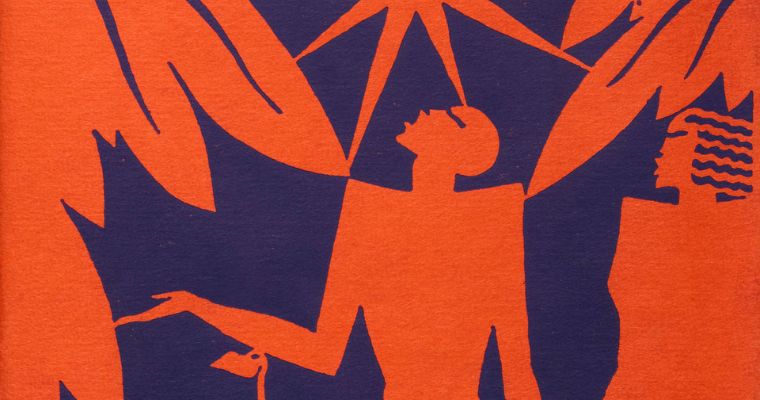
In conjunction with Black History Month in February and the Centennial of the Harlem Renaissance (approx. 1918 – 1940), the Wolfsonian-FIU is presenting "Silhouettes: Image and Word in the Harlem Renaissance," on exhibit through June 23.
In conjunction with Black History Month in February and the Centennial of the Harlem Renaissance (approx. 1918 – 1940), the Wolfsonian-FIU is presenting "Silhouettes: Image and Word in the Harlem Renaissance," running through June 23.
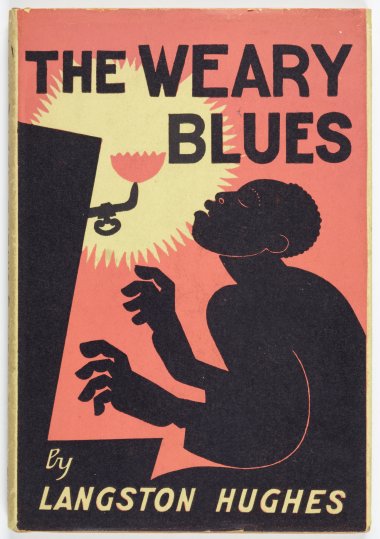
Three years in the making, the exhibit highlights Black creativity and the forces that catalyzed to create the cultural and historical movement, known as The Harlem Renaissance. The exhibit draws upon the museums’ original first edition books and artwork from that period, including periodicals such as the NAACP’s Crisis Magazine, pamphlets such as a 1930 era Negro History Week, illustrated by James Lesesne Wells, paintings, prints and sculptures and items on loan from HBCU Museums, including Fisk University and Florida Memorial University.
“Silhouettes tells the story of a people,” says Christopher Norwood, a Miami-based collector, gallerist, and founder of Hampton Art Lovers, who curated the exhibition in consultation with Shawn Christian, professor of English at Florida International University, and Wolfsonian staff.
“The Harlem Renaissance came about in part due to the Great Migration (1926 – 1970) when more than six million Blacks moved north from the rural south seeking opportunity,” says Norwood. “These people changed the landscape of their new communities, creating a New Black Aesthetic, as well as New Black Thought, art and music.”
Originally called the “New Negro,” the movement became known as The Harlem Renaissance.
Writers such as Zora Neale Hurston, musicians such as Duke Ellington, sociologist W.E.B. DuBois, and poets such as Langston Hughes flourished and rose to prominence.
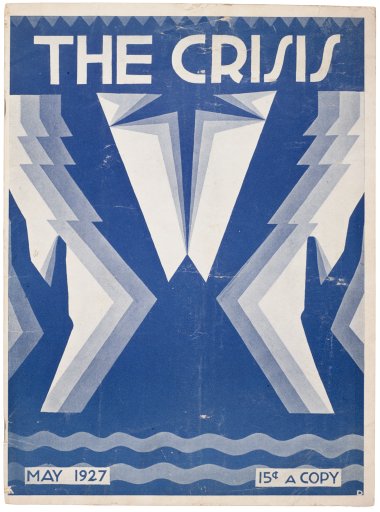
Norwood says The Harlem Renaissance is the most important and comprehensive art movement in American history, introducing the modern world to free Black thought, culture and aspiration.
He points to "The New Negro" (1925), an anthology by Alain Locke and part of the Wolfsonian’s collection, used to frame the exhibition.
An illustrated collection of writings by poets, novelists, and intellectuals, the book identifies the new manners and ways of life that resulted from the influx of those new residents to New York and other northern cities, captured in paintings, prints, sculpture, photography, theater and literature.
Christian notes that the exhibit is centered around the graphic components of items that were gifted to the museum and explores both the literary and visual arts that led to this new perspective of Black life in this period.
“There is a relationship between the printed page and the canvas,” he says. “Chris (Norwood) wanted to complement these original print works with artwork and to highlight the cultural exchange between the Black consciousness in the U.S. with Black consciousness around the world, including Ethiopia, Haiti, France and the Caribbean.”
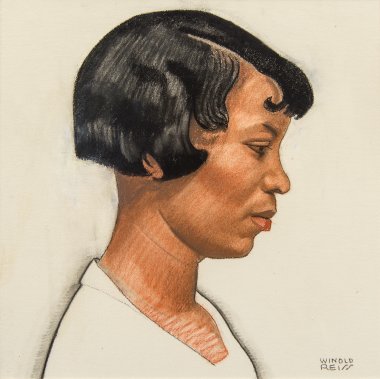
"Miss Zora" by Neale Hurston
The exhibition spotlights the work of painter and graphic artist Aaron Douglas, who illustrated Locke’s "The New Negro." His signature silhouetted figures have become a visual icon of the Harlem Renaissance.
His striking red and black image created for the cover of the Black literary journal, "Fire," in the mid-1920s is the centerpiece of the exhibit, greeting visitors from floor-to-ceiling when they enter the exhibit.
Also on display are covers and interior illustrations from 39 books, as well as more than 60 paintings, prints, photographs, and sculptures including those of Black sculptors, James Richmond Barthé and Leslie Garland Boland, whose carvings depicted quotidian themes of segregated southern Black culture.
Along with the new Black confidence and assertiveness came the ideology of “Racial Uplift,” an ideology where educated Blacks assigned themselves responsibility for the welfare of their people.
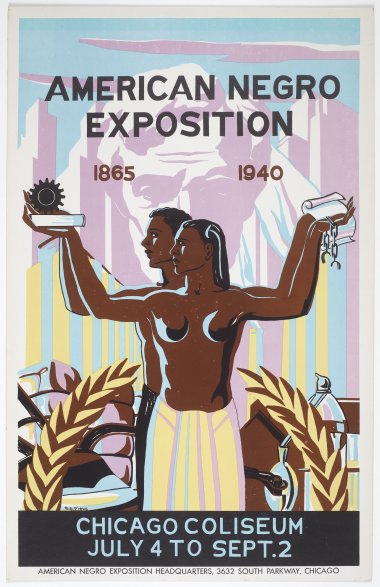
The expression of this ideology can be seen in the 1929 film "Black and Tan," written and directed by Dudley Murphy, featuring Duke Ellington and His Orchestra in a fictional role and actress Fredi Washington, on view as part of the exhibit.
“Racial uplift can be achieved in a number of ways,” Christian notes. “Artists played a significant role in achieving racial equality and were in the vanguard of the movement.”
“This is not only an exploration and celebration of Black art and culture, but illustrates the role that art plays in our lives and to ensure it goes on for future generations,” he says.
Also on display are a series of photographs (many from the Wolfsonian archives and the Fisk collection) by Carl Van Vechten, a patron of The Harlem Renaissance and devotée of Gertrude Stein.
He helped promote figures from The Harlem Renaissance, including Paul Robeson, Langston Hughes, Ethel Waters, Richard Wright and Zora Neale Hurston.
Credited for the surge in white interest in Harlem nightlife and culture at the time, Van Vechten helped poet Hughes and author Nella Larsen find publishers for their work.
Showcased are his original images of singers Billie Holliday, Cab Calloway, Ella Fitgerald and singer/dancer, Bill (Bojangles) Robinson.
To coincide with the exhibit, the Museum’s book club is reading Zora Neale Hurston's "Mules and Men," "Banjo" by Claude McKay and "The New Negro" by Alain Locke.
As much as times have evolved since the 1920s, many issues still remain current, comments Christian.
“A lot has changed in America since the Harlem Renaissance,” says Christian. “However, many of the issues addressed (in the exhibit) are still relevant today. The more one immerses oneself in these texts and images, the more it feels like they were created not so long ago.”
Silhouettes: Image and Word in the Harlem Renaissance runs through June 23.
The Wolfsonian–FIU is located at 1001 Washington Avenue, Miami Beach.
Information at (305) 531.1001 and wolfsonian.org. The Museum is open 10 a.m. through 6 p.m. Wednesday–Sunday and Friday until 9 p.m.
Free for members and Florida residents.
 MAIN MENU
MAIN MENU

